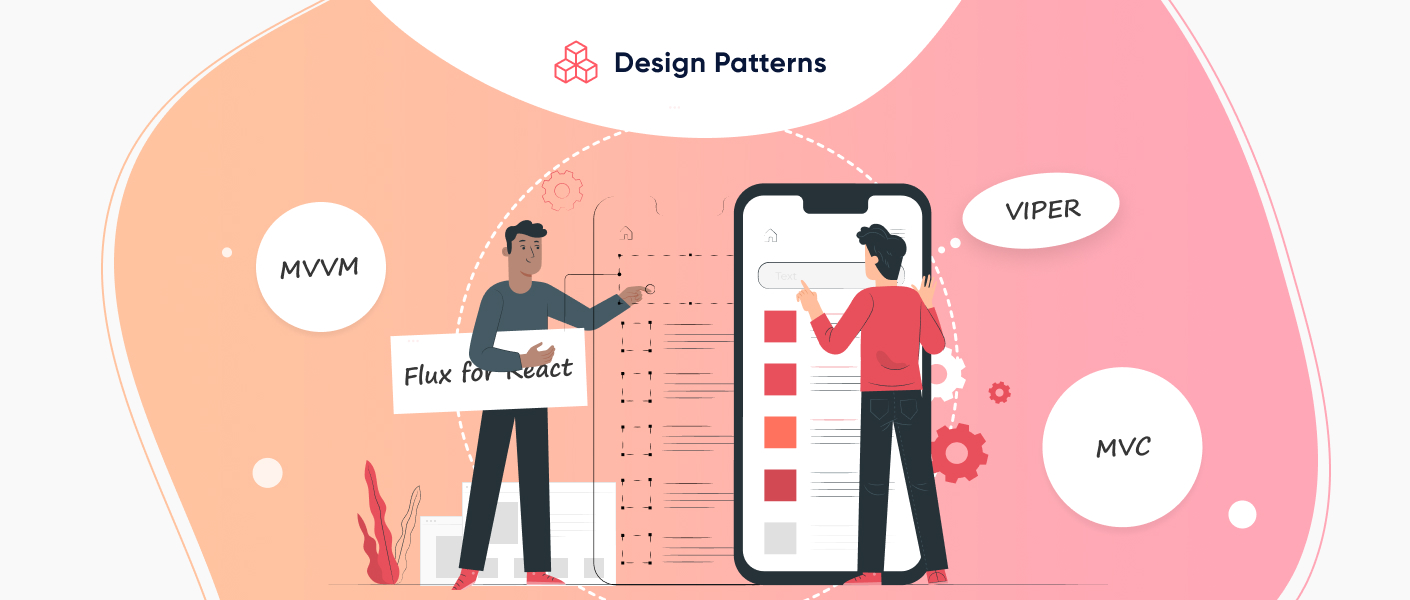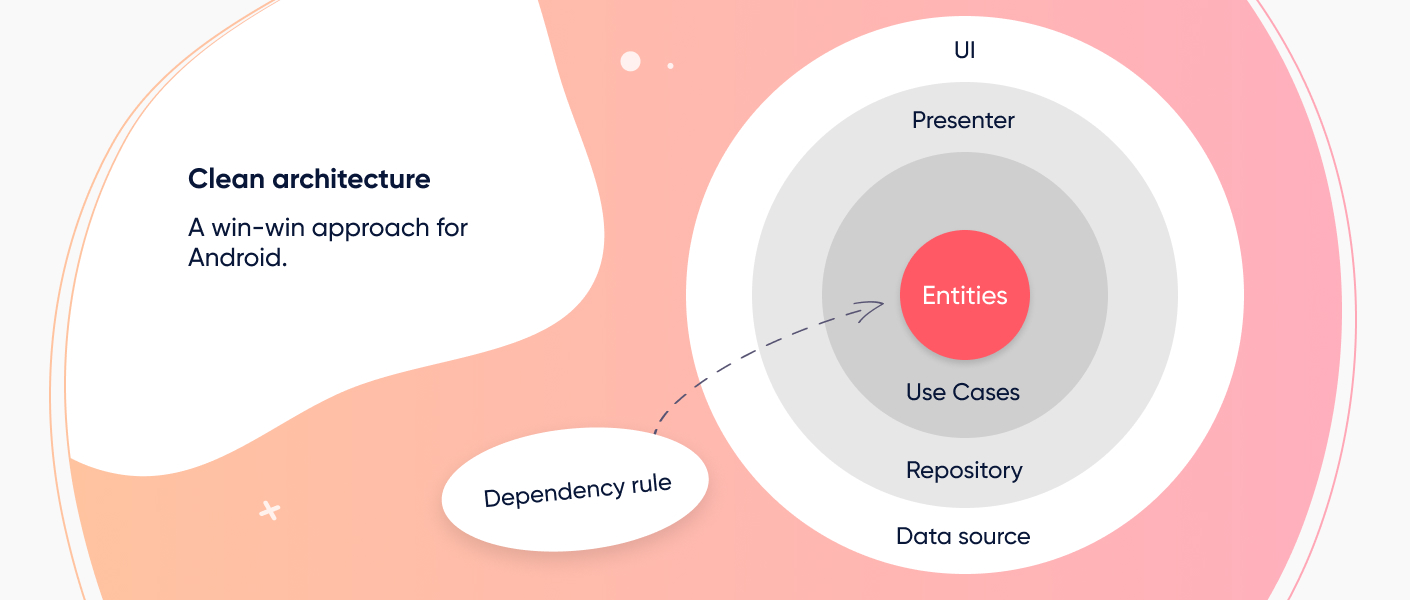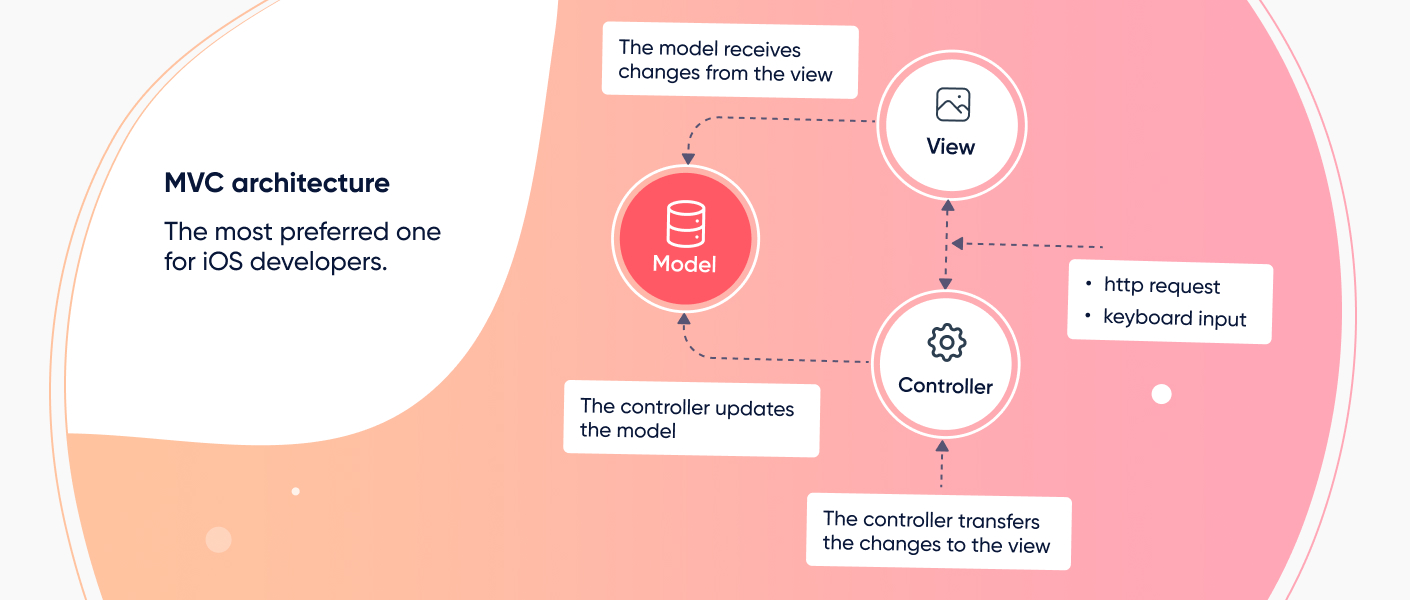If you are at the start of your developer's career, you may not be sure what application architecture is. Or perhaps you are still undecided about the choice for your application? Below, we will explain its definition, discuss its main patterns and types, and consider examples typical for the most popular mobile operating systems.
What is Mobile App Architecture?

In a nutshell, it is a set of structural components, dependencies between these components, interfaces, styles. Good one defines the simplicity of the subsequent phases of app development.
Design Patterns
Currently, there are many mobile application architecture patterns, but the most commonly used are four such options:
-
Model-View-Controller (MVC), a pattern in which a separate block is allocated for each task;
-
Model-View-ViewModel (MVVM), a pattern that separates the user interface from business logic;
-
View-Interactor-Presenter-Entity-Routing (VIPER), a pattern that divides the logical structure of an application into different levels of responsibilities;
-
Flux, a pattern typical for React programming.
Basic Types
As for the types of application architecture, in the context of mobile development, the following division is usually implied:
-
For downloading to a mobile user device from the App Store (native and hybrid ones). They are either developed for a specific platform or built with a single codebase that can run on multiple operating platforms;
-
For performing in a mobile browser. These applications are inherently mobile-adapted websites, which, due to their specific viewing on the screens of the user device, are entirely identical to the native ones.
And now about how to choose the right type of application software architecture. Naturally, the first place among the selection criteria is the development cost (for browser solutions it is much lower) and performance (solutions uploaded into the App Store always work predictably, unlike web solutions, the speed of which directly depends on the browser and the speed of the Internet connection). There are also secondary parameters, such as the method of distribution.
In particular, typical mobile applications are distributed on one platform - in the App Store. Thus, the owners of these apps get organic traffic within the store by default (for example, their apps may even appear on the home page if they have a good user rating).
On the other hand, to get into the app store, your product must meet some requirements, so in some cases, it makes sense to turn to web development. However, in everything related to promotion, you will have to rely only on your SEO team.
Android Mobile Application Architecture

Today, there are no Android app architecture best practices. Since Google does not provide any formally approved Android software architecture guidelines, you must focus on the specific project specifications. Unfortunately, this can be quite difficult as there may be some guidance in these specifications as to the preferred approach.
In this case, you have a win-win approach for Android application architecture - the so-called "clean architecture."
In general, this concept came from a 2012 article by Robert Martin. It includes several principles:
-
Framework independence. The architecture should not rely on any library or framework;
-
Interface independence. The interface should be easy to change and not require changing the rest of the system;
-
Database independence. Your business logic should not be tied to specific databases;
-
Environment independence. Your business logic shouldn't have any dependencies with the environment;
-
Testability. Business logic should be testable without any external elements like interface, database, server, or other elements.
Read more about Android app development services here.
iOS Mobile Application Architecture

Fortunately, Apple did something different from its main competitor and made it clear in its general guidelines for developers that the most commonly used mobile app architecture example - MVC - is the most preferred one for iOS developers. Of course, you can deviate from this iOS app architecture design and choose something else, but it can be a perfect starting point for those teams who do not understand which one to choose.
MVC is a way of organizing code that involves splitting code into blocks responsible for solving different problems. Here are the MVC components of iOS application architecture:
-
Model - this component is responsible for data and defines the application's structure. The Model must be completely independent of the rest of the product. The Model layer does not need to know anything about the design elements and how it will be displayed;
-
View - this component is responsible for user interaction. The View is responsible for displaying the data received from the Model. However, the View cannot directly affect the Model. We can say that the View has read-only access to the data;
-
Controller - this component is responsible for communication between Model and View. The Controller determines which View should be displayed at the moment.
Thus, the main idea behind this pattern is that the Controller and the View depend on the Model, but the Model does not depend on these two components.
Note that all these components of the mobile application architecture are described in detail in the official documentation for iOS developers so that you can fill all the gaps in your knowledge on the company's official website. Also, you can learn more about iOS app development.
Conclusion
As you already understood, the mobile app architecture is one of the fundamental factors in a competent building of the development process. Moreover, in many cases, the correctly chosen one determines the future extensibility of your solution (you must admit that it is easier and cheaper to remake an app than to build a new one from scratch). In addition, when it comes to choosing the right approach, you must consider both the technical specifications for the project and business requirements, such as the time to market and the project's overall budget. Only then will your choice be successful.
If you want to entrust all these tasks to a reliable team of specialists, you are already in the right place. Contact us now, and we'll walk the journey from specs to app launch and technical support with you.
FAQ
To conclude our article, let's answer two of the most frequently asked questions related to its topic.
What are the Benefits of App Development Architecture?
Choosing the exemplary architecture allows you to create "long-lived" solutions that do not have to be remade from scratch when the need for modernization arises. Moreover, all updates will be easy to implement and will not take much time.
How to Choose the Right Mobile App Architecture?
In the case of iOS projects, you can always follow the official recommendations of the company's developers and choose the MVC pattern. However, if we talk about Android development, the best solution would be "clean architecture."